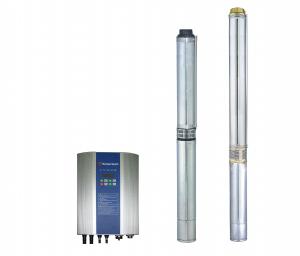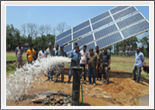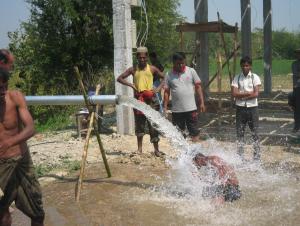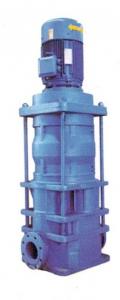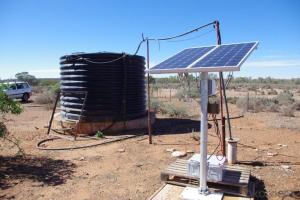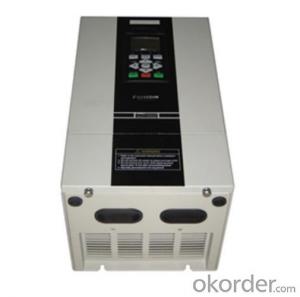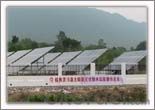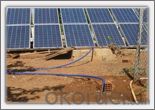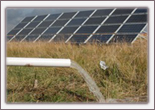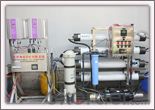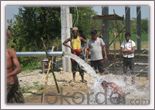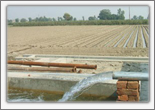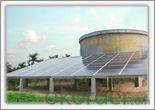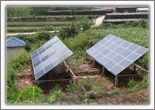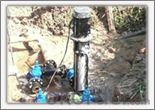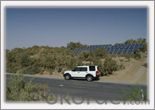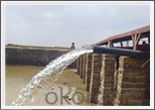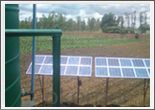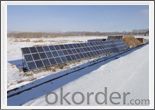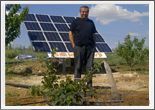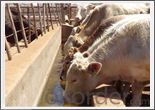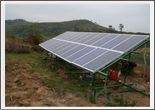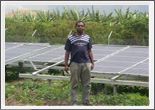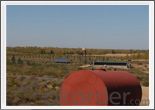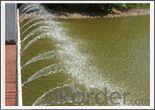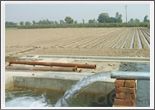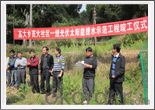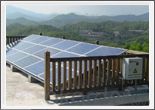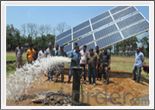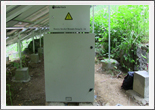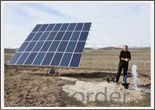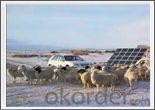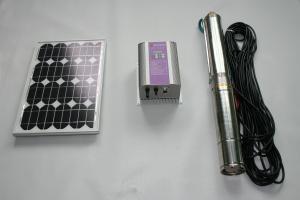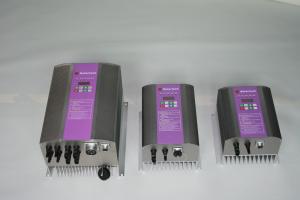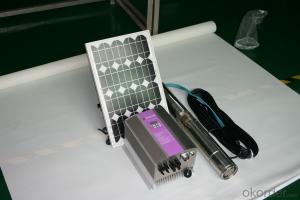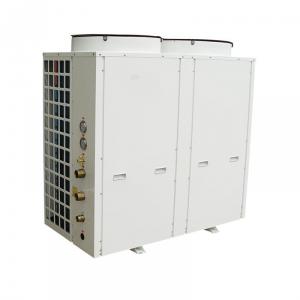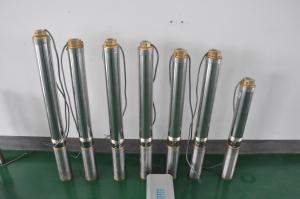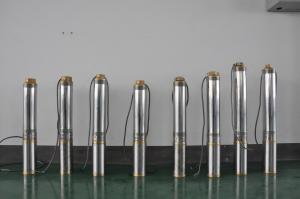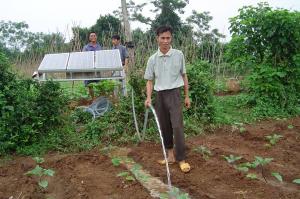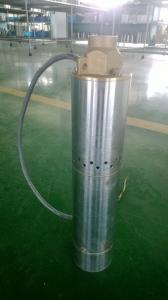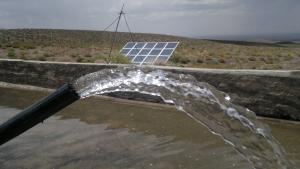Solar Pump Suppliers - Water for Life Solar Pumping Systems
- Loading Port:
- Shekou
- Payment Terms:
- TT OR LC
- Min Order Qty:
- 20 unit
- Supply Capability:
- 800000 unit/month
OKorder Service Pledge
OKorder Financial Service
You Might Also Like
Solar Inverter Introduction:
Solar pumping inverter converts DC current from the solar array into AC current to drive the pump. With the function of MPPT (maximum power point tracking), it regulates the output frequency according to irradiation in real time to achieve the maximum power.
Solar Inverters Features:
1. Adopting the proposed dynamic VI maximum power point tracking (MPPT) control method; Fast response and stable operation; Better than the conventional methods which may lead to the problems including poor tracking performances, unstable or even cause water hammer damaging when the irradiation on the array changes rapidly.
2. The solar pumping inverters system is dispensed with energy storing devices, and stores water instead of electricity. It improves the reliability of the device, at the same time, it lowers the construction and maintenance costs of the system dramatically.
3. Digital control; automatic operation and data acquisition/storage of 8 years, etc; 98% of conversion efficiency, and complete protection.
4. In-line blocks; user friendly; convenient for operating; perfect cooling and shielding.
Solar Pumping Inverter Advantages:
1. To drive pumps equipped with 3-phase induction motors.
2. Optimized SPWM.
3. Various operation modes and MPPT algorithms are available.
4. Adjustable speed range of pump based on the actual situation of the system.
5. Available option of water-level detecting and control circuit.
6. Protection functions: lightning, over/low input voltage, over current and over load protection, etc.
7. Enclosure class: IP52.
8. Ambient temperature:-10~+50˚C.
Specification:
Model | Maximum input dc voltage | Recommended MPP Voltage | Rated Output Current | Output Voltage | Output Frequency | Net Weight | Gross Weight | Package Size | ||
Length | Width | Height | ||||||||
PB5500H | 750 | 500-600 | 13 | 3PH 380V | 0-50 | 7.3 | 9.6 | 425 | 325 | 285 |
PB7500H | 750 | 500-600 | 18 | 3PH 380V | 0-50 | 7.7 | 10 | 425 | 325 | 285 |
PB11KH | 750 | 500-600 | 24 | 3PH 380V | 0-50 | 8.2 | 10.5 | 425 | 325 | 285 |
PB15KH | 750 | 500-600 | 30 | 3PH 380V | 0-50 | 8.4 | 10.7 | 425 | 325 | 285 |
PB18KH | 750 | 500-600 | 39 | 3PH 380V | 0-50 | 8.4 | 10.7 | 425 | 325 | 285 |
PB22KH | 750 | 500-600 | 45 | 3PH 380V | 0-50 | 18 | 21 | 600 | 465 | 350 |
PB30KH | 750 | 500-600 | 60 | 3PH 380V | 0-50 | 18 | 21 | 600 | 465 | 350 |
PB37KH | 750 | 500-600 | 75 | 3PH 380V | 0-50 | 20 | 23 | 600 | 465 | 350 |
PB45KH | 750 | 500-600 | 91 | 3PH 380V | 0-50 | 20 | 23 | 600 | 465 | 350 |
PB55KH | 750 | 500-600 | 112 | 3PH 380V | 0-50 | 20 | 23 | 600 | 465 | 350 |
►Middle East ►NaQu ►GuiLin
►Turkey ►XiNing ►YunNan
►Army stationed island ►Bangladesh ►Pakistan
►HaiNan ►HuBei ►Uganda
►XinJiang ►NingXia ►Afghan
►Zimbabwe ►Inner Mongolia ►Zhejiang
►Guangxi Guilin ►Turkey2 ►Botswana
►Naning ►Uganda ►Shaanxi
►Tsinghua University ►Pakistan ►Yunnan2
►FuJian ►Banqladesh ►YunNan3
►Turkey ►Inner Mongolia ►Senegal
- Q: How long does a solar pump typically last?
- A solar pump typically lasts for around 20 to 25 years, depending on the quality of the pump and its maintenance.
- Q: How does the exposure to shade or obstructions affect the performance of a solar pump?
- The exposure to shade or obstructions can significantly affect the performance of a solar pump. Solar pumps operate by converting sunlight into electricity, which is then used to power the pump. Therefore, any reduction in sunlight due to shade or obstructions can directly impact the efficiency and output of the solar pump. When a solar pump is exposed to shade, such as from trees, buildings, or other structures, the amount of sunlight reaching the solar panels is reduced. This reduction in sunlight leads to a decrease in the amount of electricity generated by the solar panels. As a result, the pump's performance may be compromised, and it may not be able to operate at its full capacity or even fail to function altogether. Similarly, obstructions like dust, dirt, or debris on the surface of the solar panels can also hinder the absorption of sunlight. These obstructions create a barrier between the sunlight and the solar panels, reducing the efficiency of solar energy conversion. As a consequence, the solar pump may experience a decrease in performance and may require more time to achieve the desired pumping capacity. In addition, it is worth mentioning that the location and orientation of the solar panels also play a crucial role in the exposure to shade or obstructions. Panels that are not properly positioned or installed in areas with limited sunlight exposure will have a direct impact on the performance of the solar pump. To ensure optimal performance, it is important to install solar pumps in areas with maximum sunlight exposure, free from any potential shade or obstructions. Regular maintenance and cleaning of the solar panels can also help prevent the accumulation of dirt or debris that could hinder their efficiency. By taking these precautions, the solar pump can operate efficiently and effectively, providing a reliable and sustainable source of water pumping.
- Q: Can a solar pump be used for firefighting in remote areas?
- Yes, a solar pump can be used for firefighting in remote areas. Solar pumps can be an effective alternative for powering firefighting equipment in areas where electrical infrastructure is limited or non-existent. They can provide a sustainable and reliable source of water supply for firefighting operations, utilizing solar energy to power the pump. This renewable energy solution can be particularly useful in remote areas where traditional power sources may be unavailable or unreliable.
- Q: Can solar pumps be used for water supply in mining or quarrying operations?
- Yes, solar pumps can be used for water supply in mining or quarrying operations. Solar pumps are often utilized in these operations as they offer a sustainable and cost-effective solution for pumping water. They can be powered by solar energy, eliminating the need for traditional fuel sources and reducing operational costs. Additionally, solar pumps are reliable and can provide a consistent water supply, making them suitable for mining or quarrying operations that require water for various processes and activities.
- Q: Can a solar pump be used for water supply in mining or construction sites?
- Yes, a solar pump can be used for water supply in mining or construction sites. Solar pumps are especially suitable for remote locations where access to electricity is limited. They can effectively extract and transport water from various sources such as wells, rivers, or ponds, providing a reliable and sustainable water supply for mining or construction operations. Additionally, solar pumps are cost-effective, environmentally friendly, and require minimal maintenance, making them a suitable choice for these types of sites.
- Q: Are there any government subsidies or incentives available for installing solar pumps?
- Yes, there are government subsidies and incentives available for installing solar pumps. Many governments around the world offer financial support, tax credits, or grants to encourage the adoption of solar energy technologies, including solar pumps. These incentives aim to promote sustainable and clean energy sources, reduce reliance on fossil fuels, and mitigate climate change. It is recommended to check with local government agencies or energy departments to learn about specific programs and eligibility criteria in your region.
- Q: Are there any maintenance requirements for solar pumps?
- Yes, solar pumps require regular maintenance to ensure optimal performance and longevity. This includes cleaning the solar panels to remove dirt and debris, checking the pump's connections and wiring for any damage or loose connections, inspecting and lubricating moving parts, and monitoring the pump's performance regularly. Additionally, batteries, if used, may require periodic maintenance such as checking fluid levels and cleaning terminals. Proper maintenance helps to maximize the efficiency and reliability of solar pumps.
- Q: Can a solar pump be used in areas with limited access to water wells?
- Yes, a solar pump can be used in areas with limited access to water wells. Solar pumps rely on solar energy to power their operations, which means they don't require a connection to the electrical grid or traditional power sources. This makes them an ideal solution for remote areas where access to water wells may be limited or non-existent. Solar pumps can be used to extract water from various sources such as rivers, lakes, or even underground water bodies, providing a sustainable and reliable water supply in areas with limited access to traditional wells.
- Q: Can a solar pump be used in areas with high water tables?
- Yes, a solar pump can be used in areas with high water tables. Solar pumps are designed to extract water from various sources, including shallow wells, boreholes, and even areas with high water tables. They are capable of efficiently pumping water from these sources using solar energy, providing a sustainable and cost-effective solution for water supply in such areas.
- Q: How does the quality of the solar panel affect the performance of a solar pump?
- The quality of the solar panel directly affects the performance of a solar pump. A higher quality solar panel will have better efficiency and conversion of sunlight into electricity, resulting in more power generation. This increased power output will drive the pump more effectively, leading to improved overall performance and higher water flow rates. Conversely, a lower quality solar panel may have lower efficiency and less power output, which can lead to reduced performance and slower water flow rates.
Send your message to us
Solar Pump Suppliers - Water for Life Solar Pumping Systems
- Loading Port:
- Shekou
- Payment Terms:
- TT OR LC
- Min Order Qty:
- 20 unit
- Supply Capability:
- 800000 unit/month
OKorder Service Pledge
OKorder Financial Service
Similar products
Hot products
Hot Searches
Related keywords
